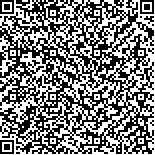周云,王锋,张全兵,等.兔膝关节伸直挛缩模型的建立[J].中华物理医学与康复杂志,2019,41(7):488-493
扫码阅读全文

|
| 兔膝关节伸直挛缩模型的建立 |
|
| |
| DOI:DOI:10.3760/cma.j.issn.0254-1424.2019.07.002 |
| 中文关键词: 新西兰白兔 膝关节伸直型挛缩 关节活动度 转化生长因子-β1 动物模型 |
| 英文关键词: New Zealand white rabbits Rabbits Knee joints Contractures Range of motion Transforming growth factor-β1 Animal models |
| 基金项目:安徽医科大学校科研基金项目(2018xkj050) |
|
| 摘要点击次数: 5754 |
| 全文下载次数: 6115 |
| 中文摘要: |
| 目的 建立新西兰白兔膝关节伸直挛缩模型,为进一步研究关节挛缩的发病机制及其治疗方案提供实验基础。 方法 将雄性骨骼成熟的新西兰白兔30只采用随机数字表法分为6组(对应不同固定时间),即对照组、固定1周组、固定2周组、固定4周组、固定6周组、固定8周组,每组5只新西兰白兔。利用管型石膏将5个固定组兔左膝关节于伸直位分别固定1周、2周、4周、6周和8周。每个对应的时间点应用过量的戊巴比妥钠对6组新西兰白兔实施安乐死,拆除石膏后测量关节液中转化生长因子-β1(TGF-β1)含量、总挛缩程度、肌源性挛缩程度、关节源性挛缩程度及后方关节囊厚度,然后以固定时间作为单因素,对各组所得指标进行单因素方差分析。 结果 6组新西兰白兔关节液中TGF-β1的含量组间两两比较,差异均有统计学意义(P<0.05)。对照组、固定1周组、固定2周组和固定4周组的总挛缩程度组间两两比较,差异均有统计学意义(P<0.05)。固定1周组的肌源性挛缩程度为(14.6 ± 2.7)°,与其余5组比较,差异均有统计学意义(P<0.05);固定2周组的肌源性挛缩程度与对照组比较,差异有统计学意义(P<0.05)。除固定6周组和固定8周组外,其余各组关节源性挛缩程度组间比较,差异均有统计学意义(P<0.05)。除对照组和固定1周组外,其余各组后方关节囊厚度组间比较,差异均有统计学意义(P<0.05)。 结论 通过石膏固定建立的新西兰白兔膝关节伸直挛缩模型简单实用,可用于膝关节挛缩发生和恢复的进一步探索,能为研究伸直型膝关节挛缩的发生机制及相关治疗策略提供较好的动物模型。 |
| 英文摘要: |
| Objective To establish a model of knee joint extension contracture in New Zealand white rabbits, and to lay the experimental foundation for further studies on the pathogenesis and treatment of joint contractures. Methods Thirty male New Zealand white rabbits with mature bones were randomly divided into 6 groups. The left knee joints of the immobilization groups (5 groups of 5 rats each) were fixed in extension for 1, 2, 4, 6 or 8 weeks. There was also a control group. At the end of each period the plaster was demolished and the level of transforming growth factor-β1 (TGF-β1) in joint cavities, the degree of total contracture, myogenic contracture, arthrogenic contracture, and the thickness of the posterior joint capsules were measured. The significance of the differences between the immobilized groups and the control group was compared using one-way analysis. Results The level of TGF-β1 in the joint fluid differed significantly among the 6 groups. The differences in the degree of total contracture among the control group, one-week, two-week and four-week groups were also significant. The average degree of the myogenic contracture in the one-week group was significantly different from the other 5 groups′ averages. The average myogenic contracture was also of significantly different between the two-week group and the control group. The degree of arthrogenic contracture was significantly different among the groups except for between the 6-week and 8-week groups. The average joint capsule thickness was significantly different among all of the groups except for between the control group and the one-week group. Conclusion This technique for modeling knee extending contracture using New Zealand white rabbits is simple and practical. It provides a better animal model for studying the mechanism of knee joint contracture and related treatment strategies and can be used for further exploration of the occurrence and recovery of knee contractures. |
|
查看全文
查看/发表评论 下载PDF阅读器 |
| 关闭 |